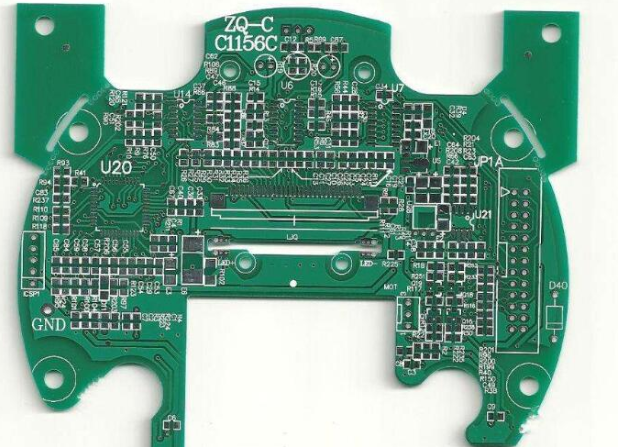1. China's FPC in recent years. In the 1980s, some of the rigid PCB companies and research institutes in China started FPC R&D and production, which will be used in military products, computers, cameras and other products. The production of flexible printed boards appears sporadic, scattered, and mysterious, and mass production has not been formed. Occasionally, I saw the publication of flexible board papers, including the manufacturing technology of rigid-flex multilayer printed boards. Before 1997,
1. FPC in China in recent years
In the 1980s, some Rigid PCB companies and research institutes in China started FPC R&D and production, which were almost used in military products, computers, cameras and other products. The production of flexible printed boards appears sporadic, scattered, and mysterious, and mass production has not been formed. Occasionally, I saw the publication of flexible board papers, including the manufacturing technology of rigid-flex multilayer printed boards.
Before 1997, there were no statistics on the output of domestic FPC. Table 2 shows the statistics of CPCA's FPC output value in China since 1998.
In recent years, China's FPC output value and output
The above data is obviously small, and the demand for flexible boards in China has shown a rapid growth trend in recent years, with an average annual growth rate of 56.5%, which is much higher than the world's average growth rate of 8.4%. Since 2001, it has increased by 70% for three consecutive years. In 2004 and 2005, the growth rate is predicted to exceed 60%. In 2003, China's FPC output value was about 30% of the total value, 45% of that of the United States, and 10% to 20% of the world's total.
I have searched for FPC manufacturers with names and surnames in different editions of the domestic PCB industry guidelines, and found more than 40 companies, among which there are several FPC substrates. Started production in the early stage, and in recent years the companies that have formed mass production include: Shanghai Bole, Panyu Anjieli, Shenzhen Dianbang, Zhongshan Yuansheng, Zhuhai Dongda, Guangzhou Chengxin and some research institutes. Manufacturers of flexible substrates include: Jiujiang Flex, Shenzhen Yueyibang, Hubei Institute of Chemistry, Zhongshan Dongyi, Guangzhou Hongren, Shenzhen Huahong, and Teamxi 704 Research Institute.
In the past two years, there have been a large number of private statistics on the investment of real money and real money into FPC projects in the past two years. It is said that there are fifty or sixty companies in the Pearl River Delta who have invested in new construction, reconstruction and expansion, mostly in Shenzhen, Huizhou, Dongguan, and Zhuhai., Guangzhou, and Zhongshan, the private sector invested a lot, while the less invested capital was as little as 10,000 yuan, and the more invested by one to 20 million yuan, or even more than 100 million yuan. It is said that ten flexible board factories in the Yangtze River Delta will be put into operation in 2004 and 2005. Flexible boards have become one of the most popular projects for private investment in the past two years.
Many factories have been established in China by Oumoto, the United States, and Taiwan. Nippon Mektron, the world's largest flexible board company, is located in Zhuhai, Fujikura, the second largest company, is located in Shanghai, Sony chemical is located in Suzhou, Nitto Denko, Sumitomo Denko, and Cosmo Electronics is located in Shenzhen; Parlex is located in Shanghai and M-Flex is located in Suzhou., Worldcircuits in Shanghai, Taiwan Yaxin (in Dongguan and Suzhou), Yijia (in Guangzhou), Jialianyi (Baijia) (in Kunshan, Suzhou), Yaojun (in East China) Xinye (Tongtai) (in Kunshan) ), Giti (in Suzhou) Tongjia (in East China). In addition, Taiwan's leading rigid board companies, Huatong and Nanzi, will also invest in FPC projects starting in 200. Almost all major FPC factories in Taiwan have established factories in China.

According to the CPCA report, the FPC companies that entered the third China Electronic Circuit Rankings in 2001 are: Suzhou Weixun Flexible Circuits, with an output value of 1.079 billion yuan in 2003, Suzhou Gititek 614 million yuan, and Sony Camico 6.02. 100 million yuan, Shanghai Bole 300 million yuan, Anjieli 185 million yuan, Dianbang 180 million yuan, Guangzhou Chengxin flexible circuit 110 million yuan.
2. Current status of China's FPC technology
(1) National FPC mass production was formed in the past three or four years. At present, it has reached a monthly output of 10,000 square meters (including single, double, and multi-layer). It is a large factory and a handful of domestic enterprises.
(2) High-level and large-scale production are concentrated in the sole proprietorships invested by Taiwan, Taiwan, and the United States in China, and concentrated in the Yangtze River Delta and the Pearl River Delta.
(3) The production process is mostly sheet processing, and there is no report on the successful roll-to-roll continuous production line in China.
(4) There are only a handful of companies producing flexible board substrates, and they are all of the adhesive type (three-layer method), and the non-adhesive type (two-layer method) has not been reported and is in the state of research and development. There are mainly two categories of polyphthalamide and polyphthalamide flexible substrates. The domestic flexible copper clad laminate base material is in the initial, development, level, and batch stage.
(5) There are many companies that claim to be able to make multilayer flexible boards, but there are few companies that can be used as mobile phone FPCs, usually 3~6 layers.
(6) At present, the line width/spacing of the most difficult mass-produced FPC is 0.075mm~0.10mm (3mil~4mil), the aperture is 0.1mm~0.2mm, multi-layer, and it is mainly used in mobile phones and digital cameras.
(7) Domestic papers on rigid-flex multilayer boards have been published at the recent National Printed Board Academic Conference, including 15 papers. There are also some domestic companies that claim to be able to combine multi-layer boards. However, in general, the domestic manufacturing and flexing board is still in the groping, research and development, and initial stages, and mass production capacity has not yet been formed.